Facts About Trajan, one of ancient Rome’s most celebrated emperors, left a lasting legacy through his military conquests, architectural achievements, and progressive leadership. Born in Italy, in present-day Seville, Spain, he was the first Roman emperor born outside Italy, breaking the traditional mold of Roman leadership. Here are some fascinating insights into the life and achievements of this remarkable ruler. Let’s explore this truth with archeology.dulichvn.net
Facts About Trajan Background and Rise to Power
The First Non-Italian Emperor
Trajan was born in Italica (modern-day Seville, Spain) in 53 AD. This made him the first Roman emperor not born on Italian soil, symbolizing the growing integration of Rome’s provinces into its leadership. His Spanish roots underscored the Empire’s vast diversity during its height.
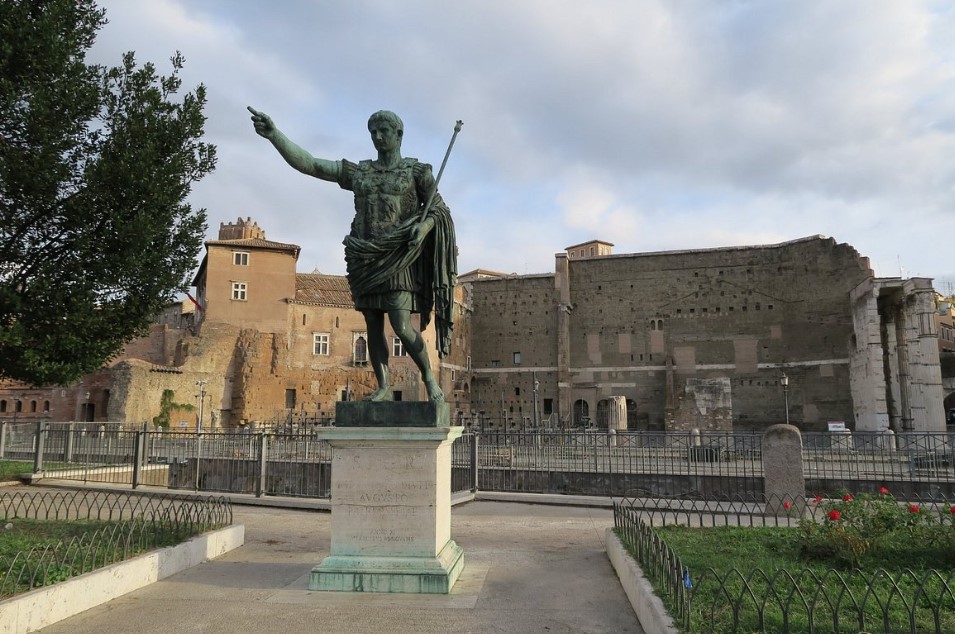
A Military Leader Turned Emperor
Before becoming emperor, Trajan distinguished himself as a skilled military commander. His success on the battlefield earned him the trust of Emperor Nerva, who adopted Trajan as his successor in 97 AD. This adoption marked a shift from hereditary succession to merit-based leadership, setting a precedent for future emperors.
A Popular Leader
Trajan’s ascent to power was met with widespread approval. Known for his fairness, humility, and dedication to the welfare of his people, he quickly became a beloved figure among Roman citizens and soldiers alike.
See more: Explore Stonehenge Unexplained Mysteries
Facts About Trajan Military Achievements
Conquests of Dacia
One of Trajan’s most famous accomplishments was his successful campaign against Dacia (modern-day Romania) between 101 and 106 AD. The conquest brought immense wealth to Rome through gold mines and expanded the Empire to its greatest territorial extent.
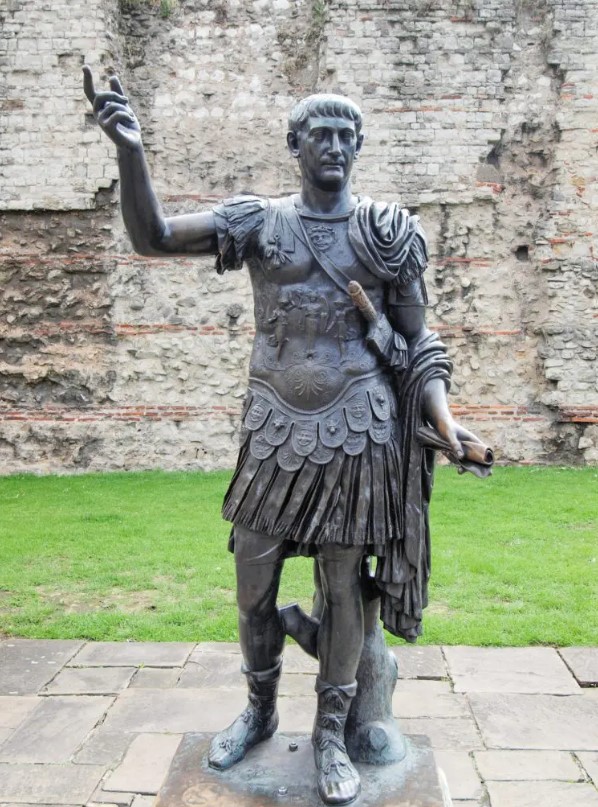
The Parthian Campaign
In 113 AD, Trajan launched a campaign against the Parthian Empire, capturing key territories such as Armenia and Mesopotamia. His military prowess solidified Rome’s dominance in the East, though these gains were short-lived after his death.
Rome’s Greatest Extent
Under Trajan’s rule, the Roman Empire reached its largest geographical size, stretching from the British Isles to the Persian Gulf. His leadership exemplified Rome’s peak as a global superpower.
See more: Clay Goddess Statuette A Glimpse into Ancient History
Trajan’s Contributions to Rome
Architectural Marvels
Trajan’s reign saw the construction of some of Rome’s most iconic structures. Among them, Trajan’s Forum and Trajan’s Market stand as testaments to his vision and Rome’s engineering brilliance.
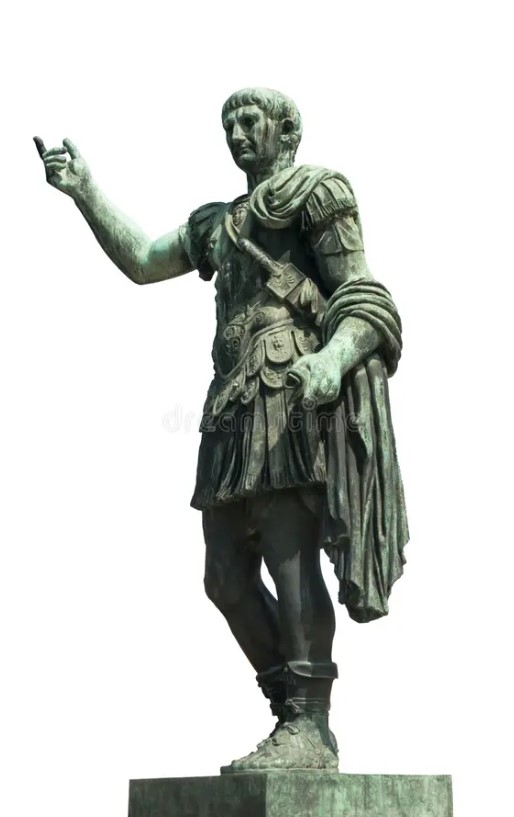
Trajan’s Column
Perhaps his most famous architectural legacy, Trajan’s Column, was erected to commemorate his victory in Dacia. The intricately carved reliefs spiral up the column, depicting scenes from the military campaign in vivid detail.
Public Welfare Programs
Trajan prioritized the welfare of Roman citizens, introducing programs to support orphans and the poor. His “Alimenta” program, which provided food and financial aid to underprivileged children, was a groundbreaking initiative for its time.
Trajan’s Leadership Style
A Humble Emperor
Trajan’s leadership was characterized by his humility. He was often seen mingling with soldiers and citizens, earning him the nickname Optimus Princeps, meaning “the best ruler.”
A Fair Administrator
Trajan’s governance was marked by fairness and a dedication to justice. He reformed provincial administration to curb corruption and ensured that the provinces shared in Rome’s prosperity.
Respected by the Senate
Unlike many emperors before and after him, Trajan maintained a strong and positive relationship with the Roman Senate. He sought their counsel and respected their authority, earning their loyalty and admiration.
Trajan’s Legacy
A Golden Age
Trajan’s reign is often referred to as a “Golden Age” in Roman history. His military conquests, architectural achievements, and social reforms laid the groundwork for Rome’s continued prosperity.
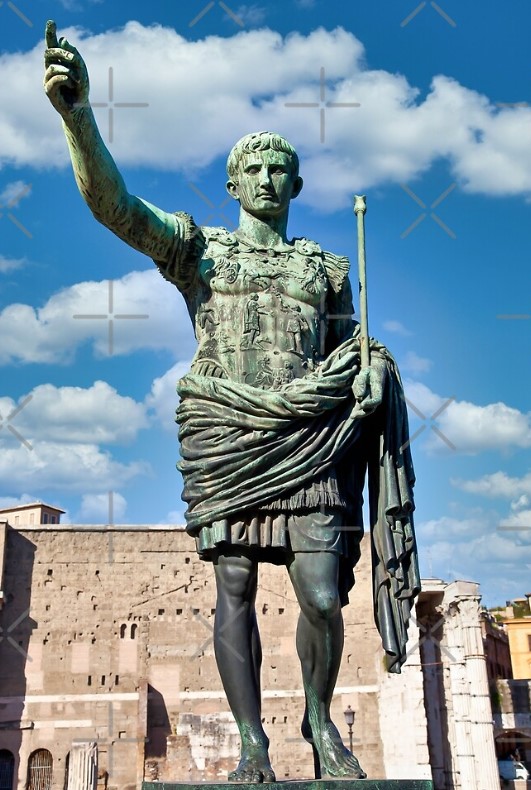
Influence on Successors
Trajan’s rule set a high standard for future emperors. His merit-based rise to power and focus on public welfare influenced the governance of later leaders, including Hadrian, his adopted successor.
Enduring Monuments
Many of the structures built during Trajan’s reign remain standing today, including Trajan’s Column and portions of his Forum. These monuments continue to attract visitors and remind us of his contributions to Roman culture and history.
Interesting Facts About Trajan
Adopted by Nerva
Trajan’s rise to power came through adoption rather than inheritance. Emperor Nerva, recognizing Trajan’s abilities, named him as his heir, establishing a system of succession based on merit.
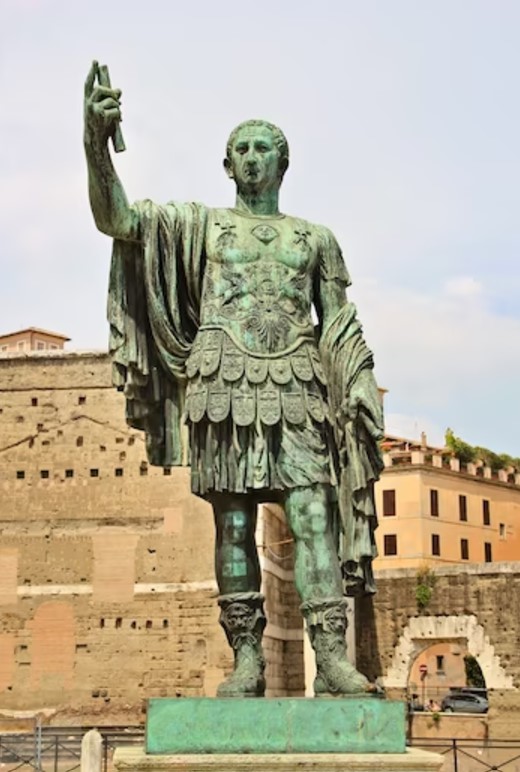
A Skilled Diplomat
Trajan was not just a military leader; he was also a shrewd diplomat. He balanced Rome’s relations with client states and sought to integrate newly conquered territories into the Empire.
A Beloved Figure
Trajan’s popularity extended beyond his lifetime. He was remembered as one of Rome’s “Five Good Emperors” and became a symbol of virtuous and effective leadership.
Conclusion: Trajan’s Lasting Impact
Facts About Trajan remain a shining example of effective governance and visionary leadership. From his military conquests to his architectural achievements and dedication to public welfare, he left an indelible mark on Rome’s history. As the first emperor born outside Italy, Trajan symbolized the inclusivity and diversity of the Roman Empire at its zenith.
Today, his legacy lives on through the monuments he built and the admiration he continues to inspire as one of Rome’s greatest emperors.

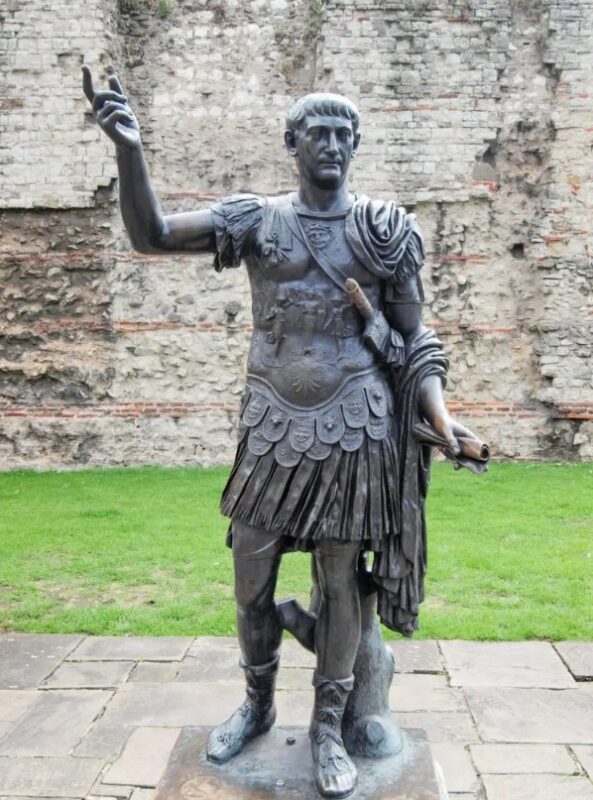
CÁC TIN KHÁC
Mary Walton: The Forgotten Inventor Who Helped Clean Up America’s Cities
Tomb of Queen Nefertari in the Valley of the Queens, Egypt
Discover the Hypostyle Hall of the Temple of Hathor at Dendera
Venus de Losange: Unveiling the Mystery of a 20,000-Year-Old Paleolithic Icon